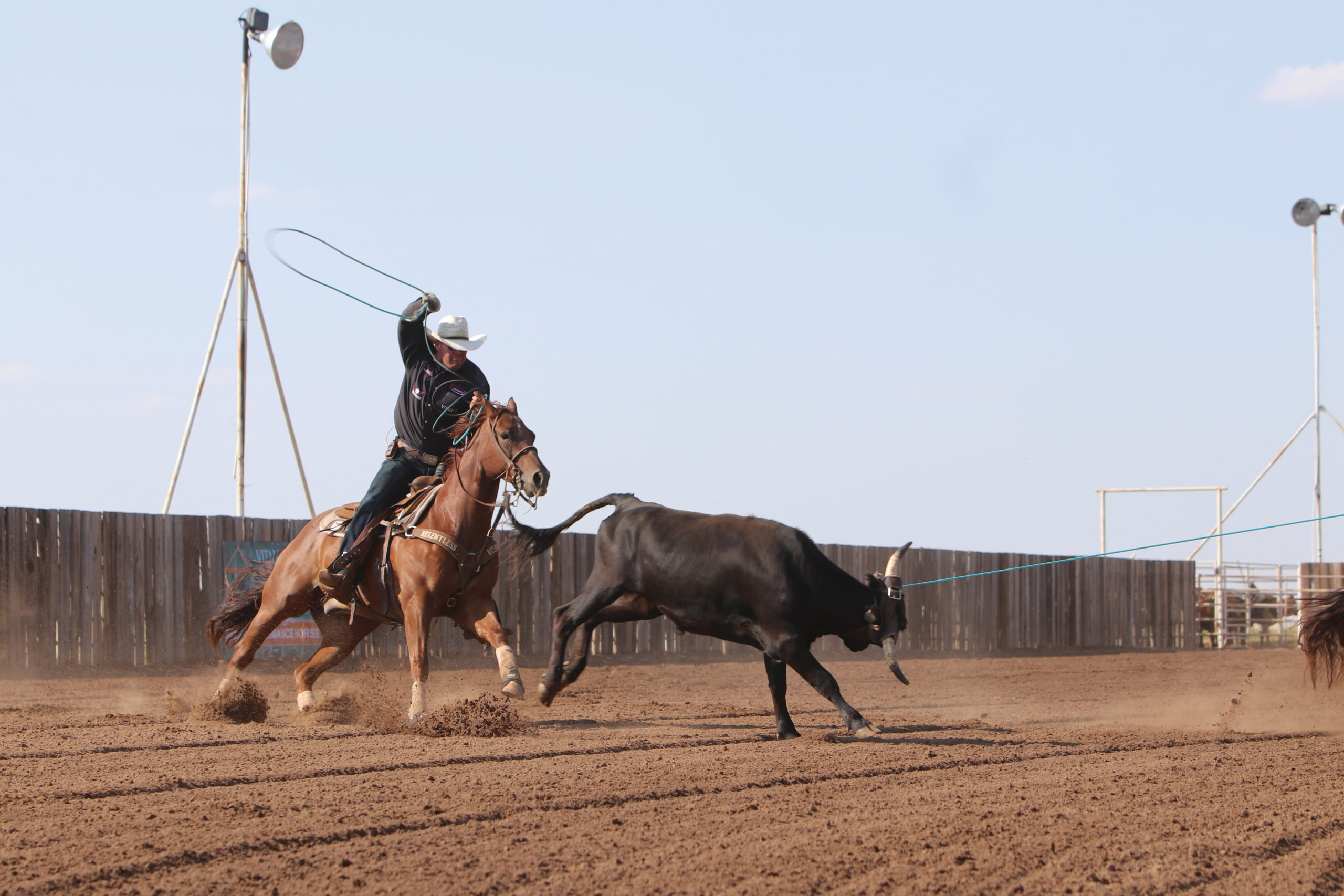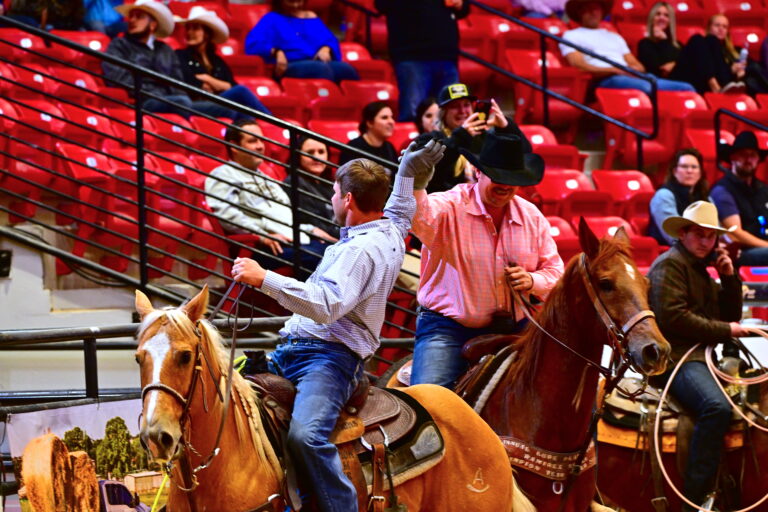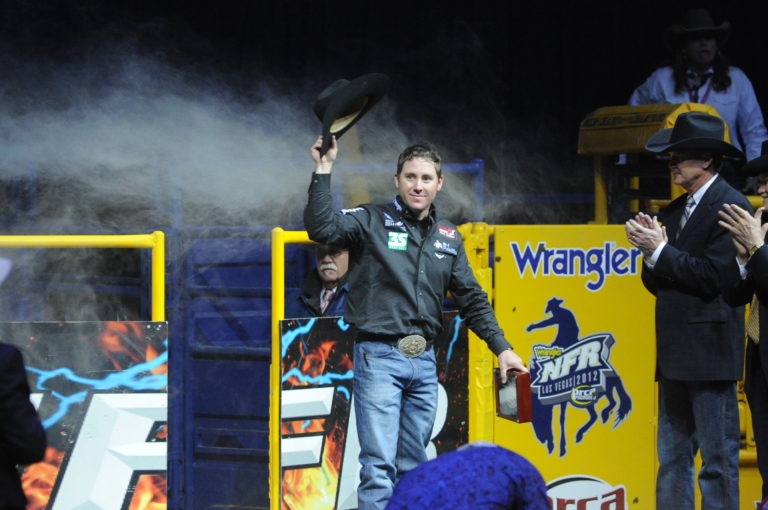I’m not a heeler—I have trained heel horses, but I’m not a heeler by any means. I study what I think the guys who are great do, and what their horses do that help and hurt them. The guys who have a really sharp, shocky left hand, it pops the horse as they’re going to throw. Their horses are a little more front endy. Joseph Harrison, when he throws, his left hand goes with his right hand. He ropes and then he picks it back up, and his horses stop with their front ends up and their back ends down. Your horse will learn to stop off the timing of your run and you sitting down in your saddle, so using your left hand can really get you beat if you overdo it.
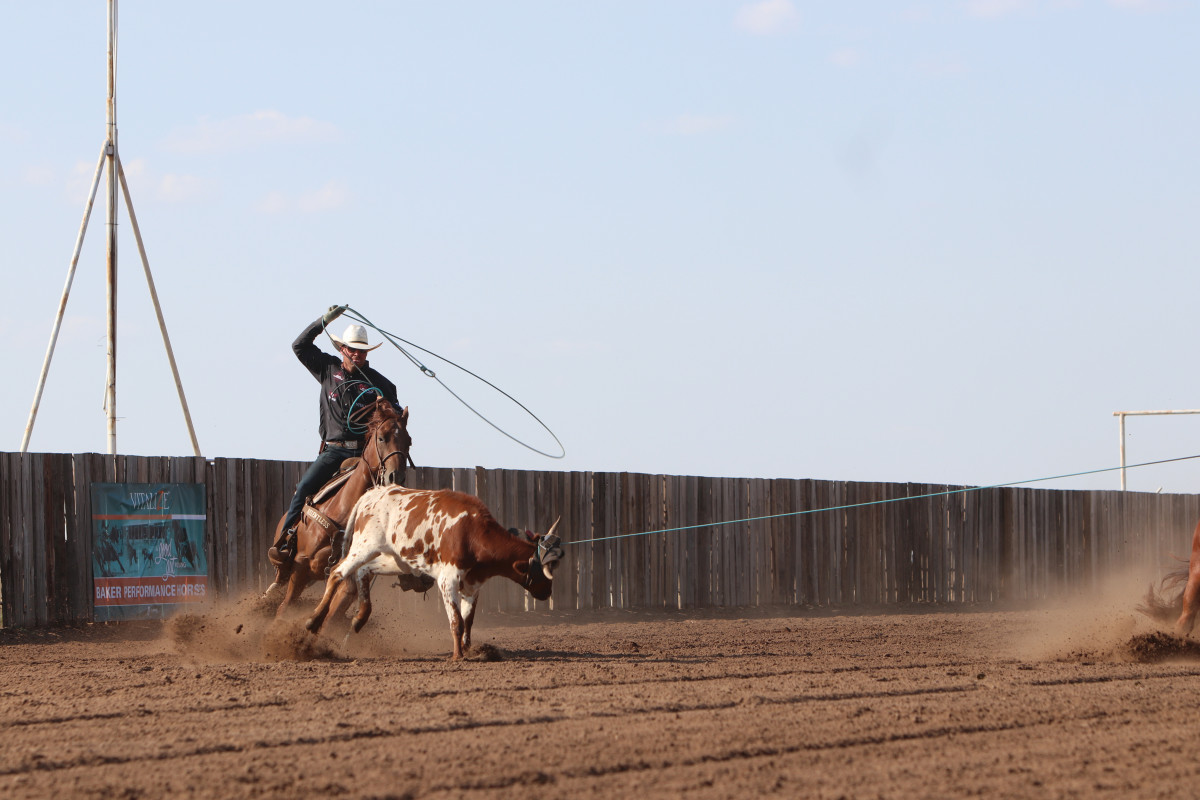
1) This is entering the corner. There’s some slack in my left rein. I want my horse to stay round, and keep his head to the inside of the steer’s hip. I don’t want his head to the right. If the hips and shoulders are in a good place, but the head isn’t, I can’t see the feet. Here, you can see that I can see the steer’s feet. I want my horse to go to a spot and stay there on his own.
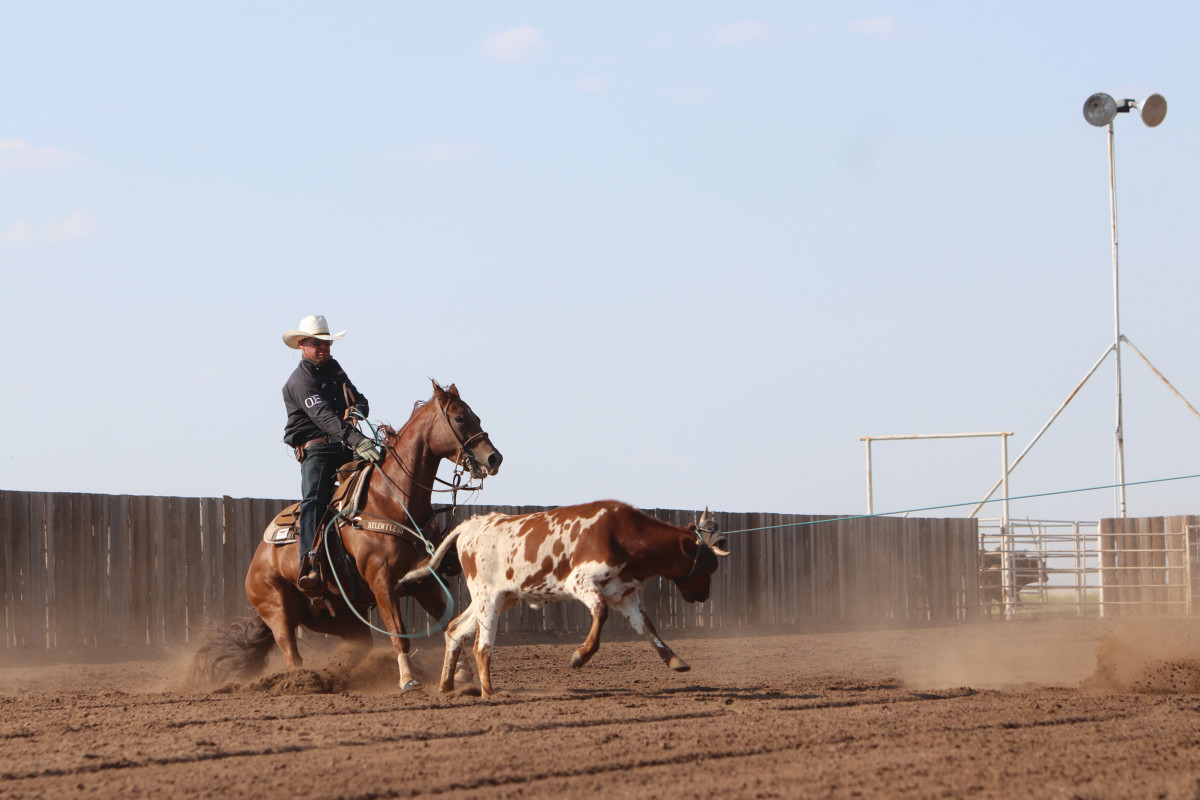
2) I’m starting my delivery, and my reins are loose and hanging. That horse has a lot of slide. So as I set my rope down, I want him getting in the ground. As I get to the top of my slack and come down to my horn, he’ll be coming down. He’s not cheating me, and his butt is lower than his shoulders. A lot of horses will get low on the front end, and that will make you slip a leg. If something about the run is off kilter, it will take your throw away if your horse has his shoulders down. If his shoulders go down, your forward momentum is done.
[Listen to Miles Baker explain his heel-horse training philosophy on The Score.]
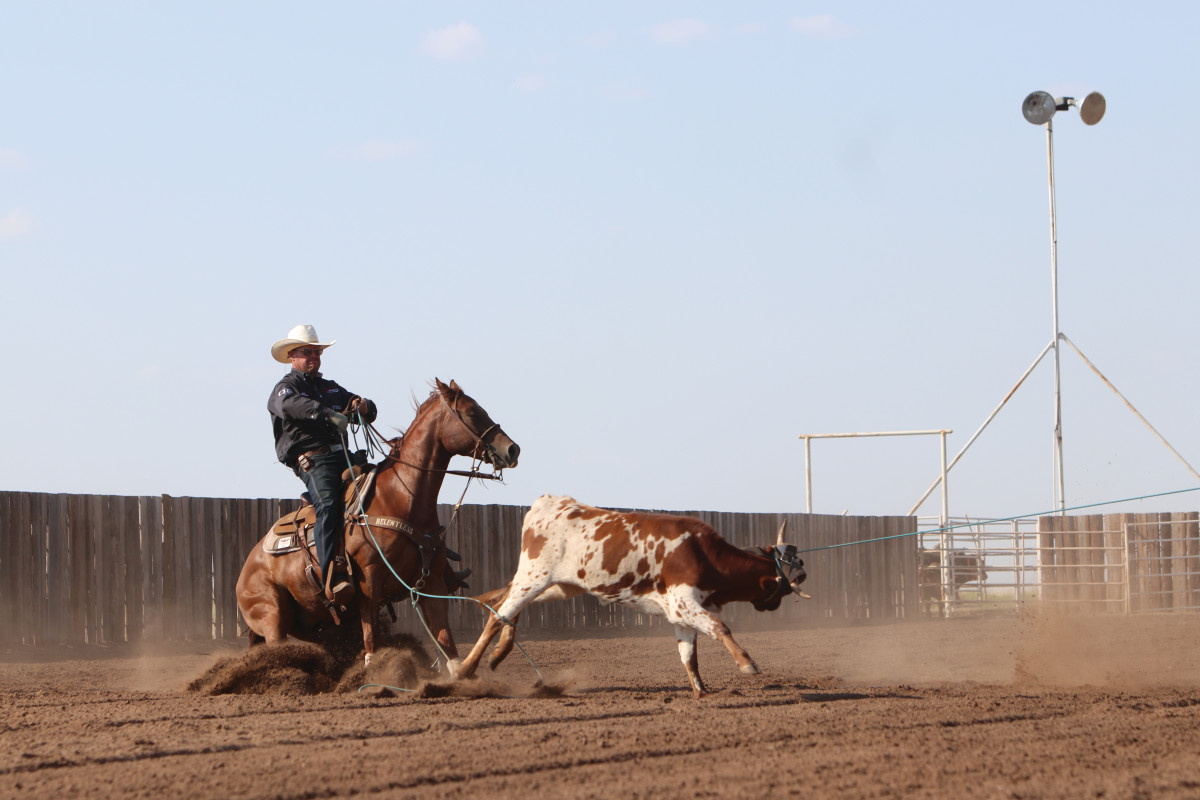
3) My bottom strand is on the ground, I’ve got a good loop down, and I’ve started to pick my slack up. I’ve picked up my reins a bit, but they’re still loose. My horse’s left front is forward, and he’s dragging his butt and moving forward and not stiff in his front end. If I were heavy with my left hand, he’d be punching on his front feet.
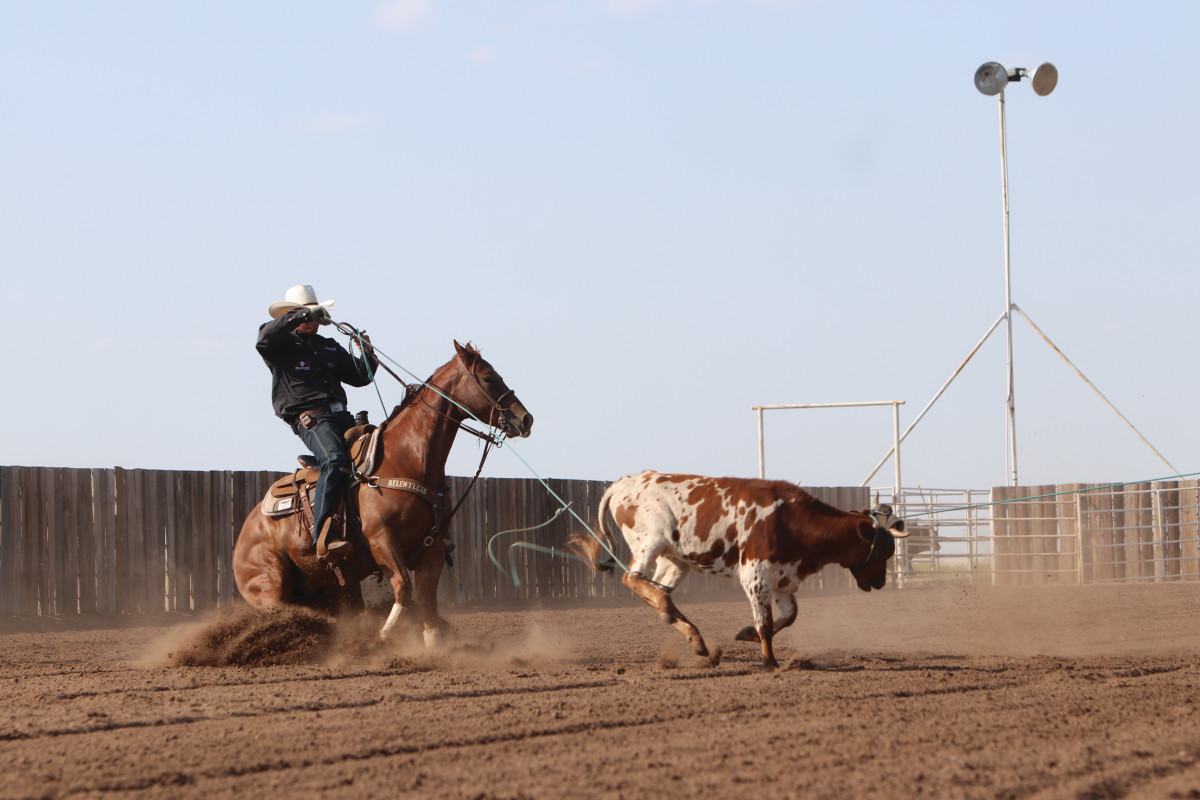
4) In this picture, my horse is farther into his slide, and he’s got one front leg picked up peddling forward. His butt is down, and his shoulders are up. You can tell my tie-down is loose, with my horse not braced against the tie-down.
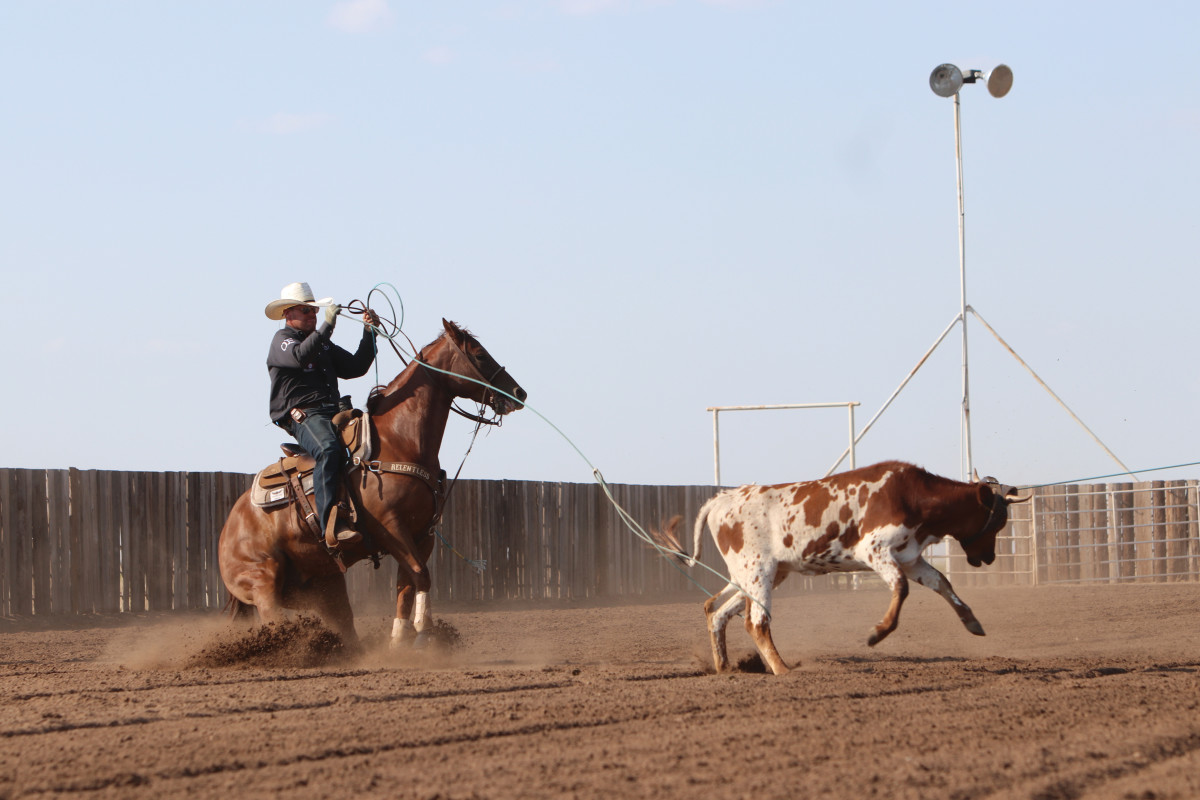
5) This is the one with the most to talk about. You can really see how far down his butt is, with his shoulders so high that the saddle horn is right up in my business. A heel horse that wants to stop and be forgiving and drag his butt and be framed in his shoulders will put the horn where it’s easy to dally. If he were dropping on his front end, I could miss my dally or slip a leg because I’m whipping my slack down. That horse is at the end of his stop, and he’s bringing the saddle horn up to me. TRJ




